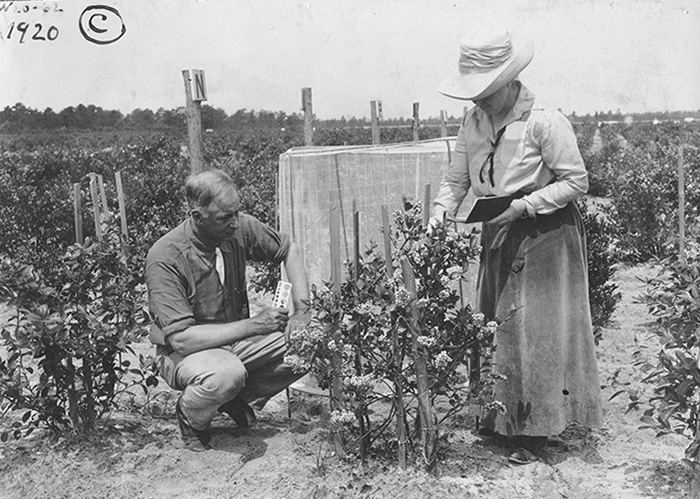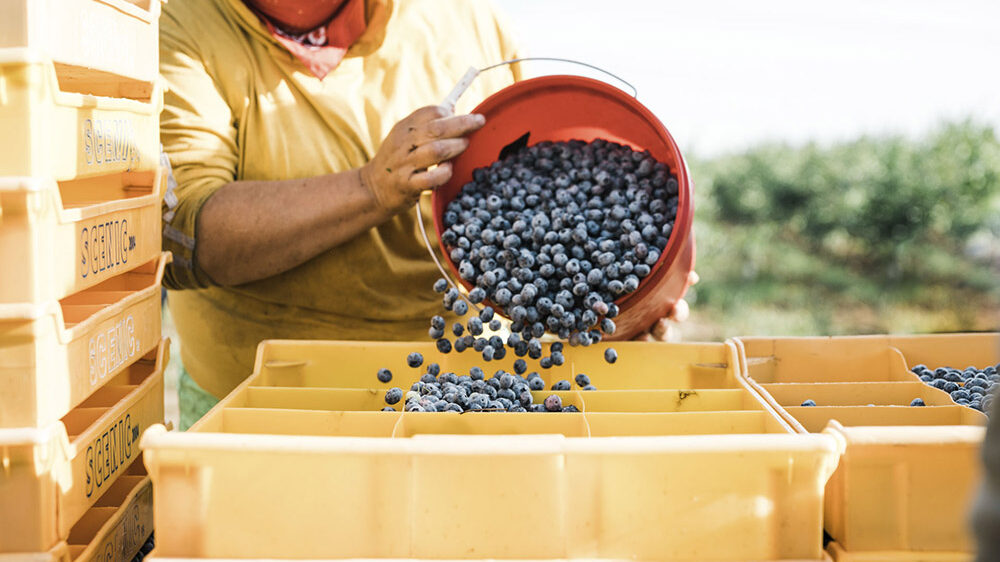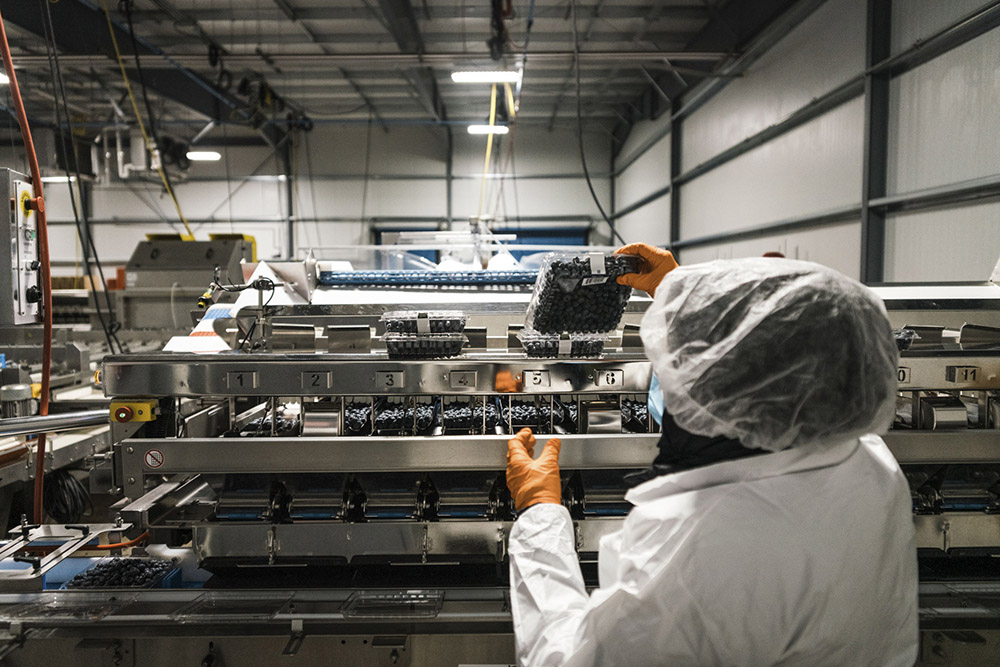Ripe with Possibility
Only highbush blueberries are available fresh all year, thanks to growers in North and South America – as well as frozen, dried, pureed, canned and more – ensuring you always have the supply and versatility to entice your customers with mouthwatering boosts of blue.
Uniquely Historic Roots
Did you know that blueberries are native to North America? People here have enjoyed boosts of blue for 13,000 years. Native Americans were the first to recognize the versatility and health benefits of blueberries, using them for medicinal purposes and as natural flavoring.
Today, we enjoy the many delicious, nutritious benefits of highbush blueberries thanks to Elizabeth White and Frederick Coville, a USDA botanist. This enterprising team produced the first crop of cultivated blueberries at Whitesbog, Elizabeth’s family farm, harvesting and selling its first commercial crop in 1916.
Across the continent, people have been falling in love with blueberries ever since, creating ever-increasing demand and delight.


Credit: Whitesbog
Get to Know Highbush Blueberries
| Plants | Grow 5-12 ft. tall |
| Climate | Prefer sunny, hot days and cool nights |
| Harvest | April – late September (North America) November – March (South America) |
| Growing Regions | 26 U.S. states, British Columbia, South America |
| Production | 905M pounds produced annually* |
| Processing | 56% sold as fresh and 44% sold frozen or some other form of processing* |
*NABC Stat Book, 2020 Crop Year, Blueberry Production and Utilization
Follow the Blueberry Journey
From the first seed to the first delicious bite, the blueberry journey is carefully planned and supported by dedicated professionals throughout the supply chain.

In the Field
- Planting: Blueberries are part of a plant family that includes the flowering azalea, mountain laurel and heather plants. They’re planted in rows spaced 8 to 10 feet apart.
- Harvesting: Blueberries are picked by hand or harvested by shaking the plants and collecting the berries as they fall.

In Processing
- Cleaning: Leaves, stems, stones and other debris are removed from the blueberries.
- Sorting: Blueberries are sorted by color and firmness, removing unripe berries. Softer berries are moved to the frozen line. Reddish blueberries are moved to the fresh line.
- Inspecting: Government-trained inspectors pull samples off the line at frequent time intervals during the day for grading, assessing factors such as color, aroma and defects in an onsite lab.
- Freezing: Blueberries are individually quick frozen (IQF) and packed, or packed and then case frozen.
- Packing: On the fresh line, blueberries are weighed, packed and sealed (with ventilation), where they will remain fresh in refrigeration for 10-12 days.

On the Move
- Shipping: Blueberries are carefully transported to retailers, suppliers and manufacturers across the nation and the globe.
- Selling: Fresh and frozen blueberries brighten grocery aisles, enhance menus and upgrade manufactured foods.
- Enjoying: Customers get a tasty boost of blue, encouraging satisfaction, loyalty and repeat blueberry business.
The Story of the Blueberry: Follow the small but mighty blueberry from field to harvest, sorting to packing and all the way to your grocery shelf or restaurant meal.
Partner with Us
Ready to give your efforts a boost? Let’s collaborate – USHBC is here to support you and connect you with the resources you need to buy, sell and use blueberries in all their forms.
